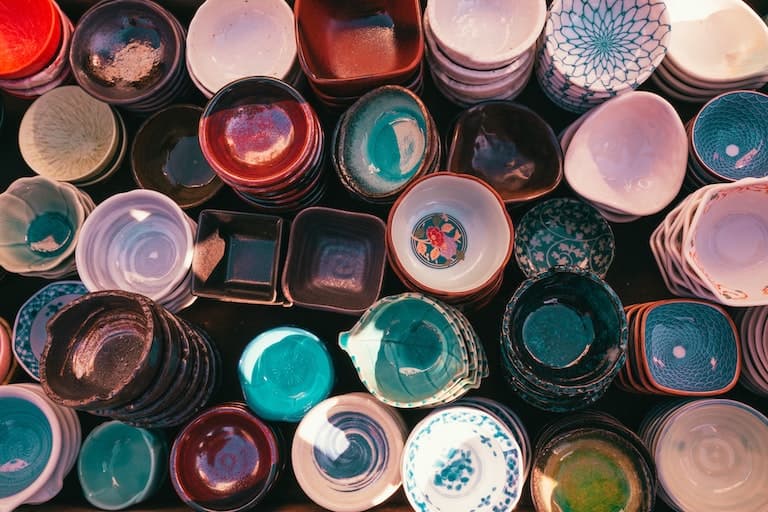Characterization And Ceramics
Published: October 2021

As I mentioned in previous posts, I attended a Clarion West Workshop that was really good. During the workshop, we did an exercise in characterization that I thought was interesting.
The prompt was to create a character that would fit in the fictional universe of one of our readings. The one that intrigued me most was a chapter from Misha’s “Red Spider White Web.” The chapter consisted of the characters moving about in an open-air art market. The story is in the cyberpunk genre, so the art involves holograms and art made out of rat organs. It was gritty and dirty and fascinating.
I wanted to think of something or someone that would stand out in that kind of an atmosphere.
The image that came to my mind was a ceramicist who worked with earth and clay in the midst of a gaudy and grody environment. Characters come to me in images. So that’s what I started writing down. This is what I came up with:
- Fired clay in a land of body mods and holograms.
- Blunt nails on long wiry fingers.
- A different kind of dirty. Clay and water deposits on a canvas apron.
- The bustle surrounded him with their blinking implants and moved around him like a stone in a stream.
- Everything about him was earth-toned but the fired clay. It was glazed in the bright yellow of aspen in the fall, red like ochre, blue lapis.
The second exercise involved trying four different types of characterization; this was one of my favorite takeaways. These came from Brian K. Hudson, who ran the workshop.
The Four Types of Characterization
- Direct characterization via narration
This is the narrator talking about the character. E.g., He was sad. - Indirect characterization via narration
This is characterization through action. E.g., His head drooped as his eyes filled with tears. - Indirect characterization via dialogue
This is characterization by what others are saying. E.g., “Hey, it’s okay,” said his mom. - Indirect characterization via dialogue
This is characterization through what the character says themselves. E.g., “Sorry, mom, I just miss him so much.”
I tried to come up with an example of each of these types in order in the same paragraph. But I ran out of time for the exercise. This is what I came up with for our cyberpunk ceramicist.
His sun-touched face was deeply lined and looked somber, but it sprang to impish life when he smiled. He had a habit of innocently dropping the malformed castaways, bowls blistered and warped in firing, at the feet of unsuspecting passersby. Startled from their holographic revelry, they would stare bemusedly at the shattered clay at their feet, assuming some sort of inattentive accident on their part. Of course, he did nothing to dissuade them.
I got the first two types. I was planning on adding some additional dialogue between a few characters to tick the last two boxes. I liked the character I was able to create in such a short time. I’ll definitely be using this exercise again when I need to create characters.